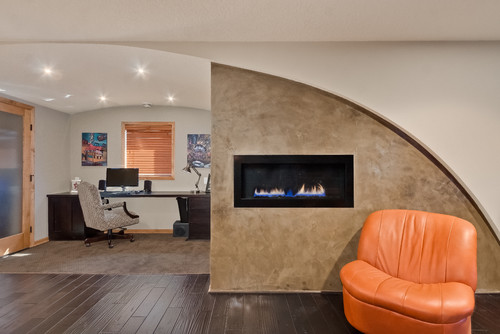Have you ever wondered how professional painters get such striking results when creating faux finishes? If you’ve ever experimented with layering paint colors in your home’s interior and been disappointed in the results, we’re going to let you in on a trade secret for creating flawless faux finishes every time.
Glaze
Glaze is a liquid medium that can be mixed with paint. While it is wet glaze has a milky, white appearance that becomes completely clear once dried. Glaze slows the drying time of paint, giving you more time to work. As anyone who has ever attempted a faux finish without using a glaze knows, there is nothing more frustrating than having your paint dry before you’ve completed work in an area!
Mixing glaze in with your interior paint also allows the color of the paint to remain more vibrant than if you simply thinned your paint with water. Glazes have become more specialized with advances in paint technology. Today you can find glazes in a variety of finishes and styles to suit your painting project.
Using Glaze to Create Faux Finishes
Glazes are typically mixed with interior paint when creating faux finishes. Your ratio of glaze to paint will change how sheer or opaque the color appears on the wall, with more glaze than paint resulting in a less opaque layer and less glaze than paint in a top layer with more opacity. You will want at least two different colors of interior paint and a glaze to achieve a basic faux finish.
The tool you use to apply your glaze mixture will have a big impact on the effect you’re able to achieve. There is a huge variety of specialty brushes available, made for everything from stippling to strié, but you don’t have to rush out to purchase these. Many of these effects can be duplicated with a little experimentation and a regular paint brush. Of course brushes aren’t your only option with faux painting. Rags, sponges, cheesecloth, and even common household items like paper make great tools for creating interesting textures with paint.
Before you start putting paint on your walls it is a good idea to experiment with glaze consistencies and application techniques on a piece of posterboard. Faux painting can be a fun and creative process, so take your time trying out different combinations.
Faux Paint Your Interior in 4 Simple Steps
- Tape off baseboards and ceilings.
- Begin by selecting the color will be your wall’s base color. Paint your room as you would normally, and allow it to dry completely.
- Mix your second paint color with the glaze, thinning out the color to the desired consistency.
- Apply your glaze mixture using your selected technique.
Have a spot on your wall you’re not happy with? No need to panic! You can ‘add’ or ‘subtract’ from most faux finishes by layering either your base paint color or more of your glaze mixture overtop.
Now that you know how easy it is to achieve a professional looking faux finish in your home, what room will you transform?

